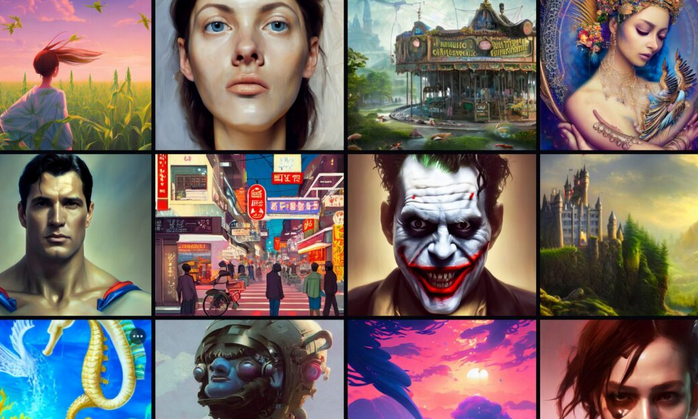As a devoted member of the DeviantArt artistic community, I’ve been fascinated by the unique interaction between artificial intelligence and creativity. With a tool called DreamUp, the well-known online community for artists, DeviantArt, has lately entered the field of AI image creation. Users may now create images using text prompts, opening up new opportunities for both human artists and AI aficionados like myself. The community has expressed curiosity about this AI and art merger, but it has also caused bewilderment and even ire.
Creators are invited to investigate the capabilities of DreamUp, which is built on Stability AI’s Stable Diffusion technology. Every user on DeviantArt receives five free prompts, but those who want more can sign up for one of the site’s Core subscription plans, which give users access to an additional 50 to 300 questions each month as well as the opportunity to buy more prompts separately. DreamUp stands out for its exceptional capacity to recognize whether a user is attempting to imitate the aesthetic of another artist. The tool is made to stop the duplication if the original creator objects.
Deeply troubling considerations regarding consent and the value of unique artistic styles have been highlighted by the advent of AI to the art world. DeviantArt has chosen a novel strategy to address these issues. According to CEO Moti Levy and CMO Liat Karpel Gurwicz, they have adopted Stable Diffusion in its basic form rather than starting platform-specific training for DreamUp. This model is the outcome of the data that Stability AI had at the time that DeviantArt adopted it.
DeviantArt is employing a calculated strategy to thwart unlawful copying. They have made it illegal to use specific artists’ names, aliases, or works in prompts. Through a form, artists can formally request this protection, and their requests to opt out will be manually granted. Other platforms have also been affected by the debate over AI-generated art and its potential to infringe on distinctive artistic movements, which has resulted in explicit bans on AI-generated art on various platforms.
However, DeviantArt is dedicated to embracing a variety of creative expressions and avoids censorship. DreamUp is an example of their effort to support artists by preventing purposeful, direct duplication without authorization. The system in DreamUp that prompts users to give credit to the original artist even if they approve of the replica is a noteworthy feature. The interface prompts users to acknowledge the artist’s style they are imitating when uploading a DreamUp-generated artwork to DeviantArt, ensuring that proper credit is given.
Although DeviantArt’s strategy appears sensible and seeks to promote transparency, there are real-world difficulties. DreamUp’s usefulness may be hampered by the need for artists to be aware of it and the possibility to remove their names from prompts. Additionally, the algorithm primarily targets members of the DeviantArt community, potentially marginalizing those artists who openly express opposition to AI-generated art.
An optional “noai” tag has been added as part of DeviantArt’s efforts to address the crucial problem of consent in AI training datasets. Artists can indicate in this flag whether they consent to having their work used as training data for AI. Although the idea is admirable and open-source, there are still some doubts about how widely it will be adopted.
Fundamentally, the interaction between AI and art is a difficult frontier, and DeviantArt’s foray into it sheds insight on the complicated difficulties it presents. The platform clearly tries to strike a balance between innovation and moral issues, but there are still many unknowns to be resolved. DeviantArt is a singular case study in negotiating this complex landscape as the AI landscape changes and discussions about permission, ethics, and copyright continue.
